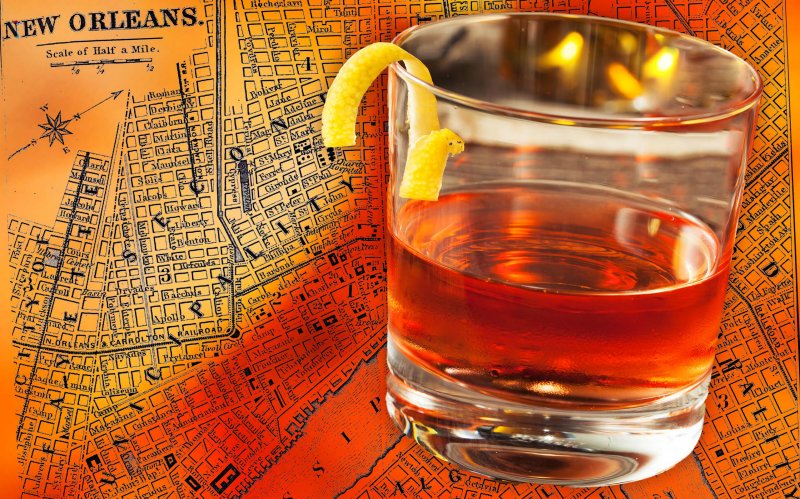
#483
IS THE SAZERAC A NEW ORLEANS COCKTAIL?
25 Apr 2017 By David Fuhrmann-Lim
David Wondrich untangles the complicated history of this classic Crescent City drink.
By David Wondrich
There’s no way of counting how many different ways people have found to combine spirits, wines, juices, herbs, spices, sugars and whatnot, and no central record of the discrete names these myriad combinations have had bestowed on them. Until 2005, I would have guessed that their number was in the thousands; now, after more than a decade of ceaseless, hamster-in-a-wheel mixological invention, I would multiply that figure by ten or 20.
The vast majority of these concoctions live only fleetingly, made by one person, once, and die unnamed. Some, though, are christened and mixed again. A few of these named drinks are fortunate enough to make it onto cocktail lists, where their names are recorded for posterity, should anyone care enough to go looking for them. A light sifting of those ever get noticed, written about, discussed. Of that, what, five percent? three percent? one percent?, of all drinks that are invented achieve fame. These select concoctions join the canon, the list of drinks which every experienced, skilled bartender is expected to have at least heard of. It is not a long list, all things considered: no more than 200 or 300 drinks, from the Aviation to the Zombie, with stops in between at the Bronx, the Green Swizzle, the Pink Lady, the Southside and so forth.
But even that list has its levels: no more than 40 or 50 of those drinks are true, universal classics, the ones every serious bartender knows how to mix because she has mixed them a thousand times. And within that elite corps, there is an inner circle, a clutch of drinks that have somehow caught the popular imagination; drinks whose pedigrees are much-debated accretions of fact, myth and legend. Among these one will find the mighty Martini, the mellow Manhattan, the delightful Daiquiri, the dangerous Margarita, the steadfast Old-Fashioned, the sophisticated Sidecar, the rowdy Long Island Iced Tea and a handful of others. Of these cocktail immortals, none has a thicker crust of myth and legend surrounding it than the Sazerac Cocktail, the mix of rye whiskey, Peychaud’s Bitters, sugar and absinthe that is the State Cocktail of Louisiana. And all of that myth has grown on a framework bolted onto the drink by one man: Stanley Clisby Arthur, the man with three last names.
Arthur was one of those self-creating types in which this country used to abound. Born in Merced, California in 1881, he worked for a while in San Francisco and Los Angeles as a newspaper reporter and photographer and then lit out for El Paso and New York before settling in New Orleans. There he took wildlife photographs for the local papers (he specialized in birds) and wrote children’s books with his wife. Through his interest in the naturalist John Audubon, who had lived in the city, he also began developing an interest in the city’s unique history and the jumbled old archives that documented it. In 1915, he parlayed his bird pictures into an appointment as Louisiana State Ornithologist, despite having no formal credentials in the field. In 1920, he went back to journalism, writing local history items for the New Orleans Item and the “Who’s Who in the Zoo” column for its children’s page. Tiring of that, he got himself appointed director of the state Department of Wildlife. When that gig ended, he wrote for a couple of years and then, in 1934, found himself a WPA job as regional director of the Federal Survey of Archives, again without formal qualification. From there he slid into the directorship of the Louisiana State Museum, which he held onto from 1941 until his retirement seven years later (he died in New Orleans in 1963).
In the mid-1930s, Arthur published a series of slim and lively, even gossipy works of local history, based on the archives he and his WPA crew were surveying. Among these works was Famous New Orleans Drinks and How to Mix ‘Em, which he published in 1937. With the exception of “Down the Hatch,” a crude, semi-literate sheaf of recipes published after Repeal by Paul Alpuente, former bartender at Henry C. Ramos’s Stag Saloon, Arthur’s was the first cocktail book published in New Orleans, and it was the first to investigate the histories and lore of that peerless city’s unique drinks.
Admittedly, most of the book’s 139 recipes are the standard American tipples of the day—the Manhattan and the Martini; the Highball and the Old-Fashioned. But there are also legitimate Crescent City favorites such as the Ojen Cocktail, the Roffignac, the Ramos Gin Fizz, the Vieux Carre, the Cocktail a la Louisiane, the Café Brulot and, of course, the Sazerac.
In 1937, the Sazerac was a fairly well-known drink in America, the sort of thing you could ask your bartender for, if the joint specialized in cocktails and he was a canny old-timer. Even the most educated tippler wouldn’t have known much about the drink, though, beyond the fact that it was from New Orleans and the supposition that it was, as O. Henry put it a generation before, one of those “drinks invented by the Creoles during the period of Louey Cans.” (Louey Cans was not a local mobster, but rather Louis Quinze, alias King Louis XV of France.)
If he or she was old enough, there would also be a memory of the range of gaily-labeled bottled Sazerac-brand cocktails that the Thomas H. Handy Co. of New Orleans sent all around the country back before the Great Drought: the Manhattan, the Martini, the Gin Cocktail, the Vermouth Cocktail, the Brandy Cocktail and, most popular of all, the Sazerac Whiskey Cocktail. If the drinker was sporty enough to have visited New Orleans back in the day, there might also be memories of a visit to the Sazerac House, the old saloon on the edge of the French Quarter owned by the Handy company, where you could get that Sazerac Whiskey Cocktail—“Sazerac Cocktail” for short—mixed for you on the spot by true artisans.
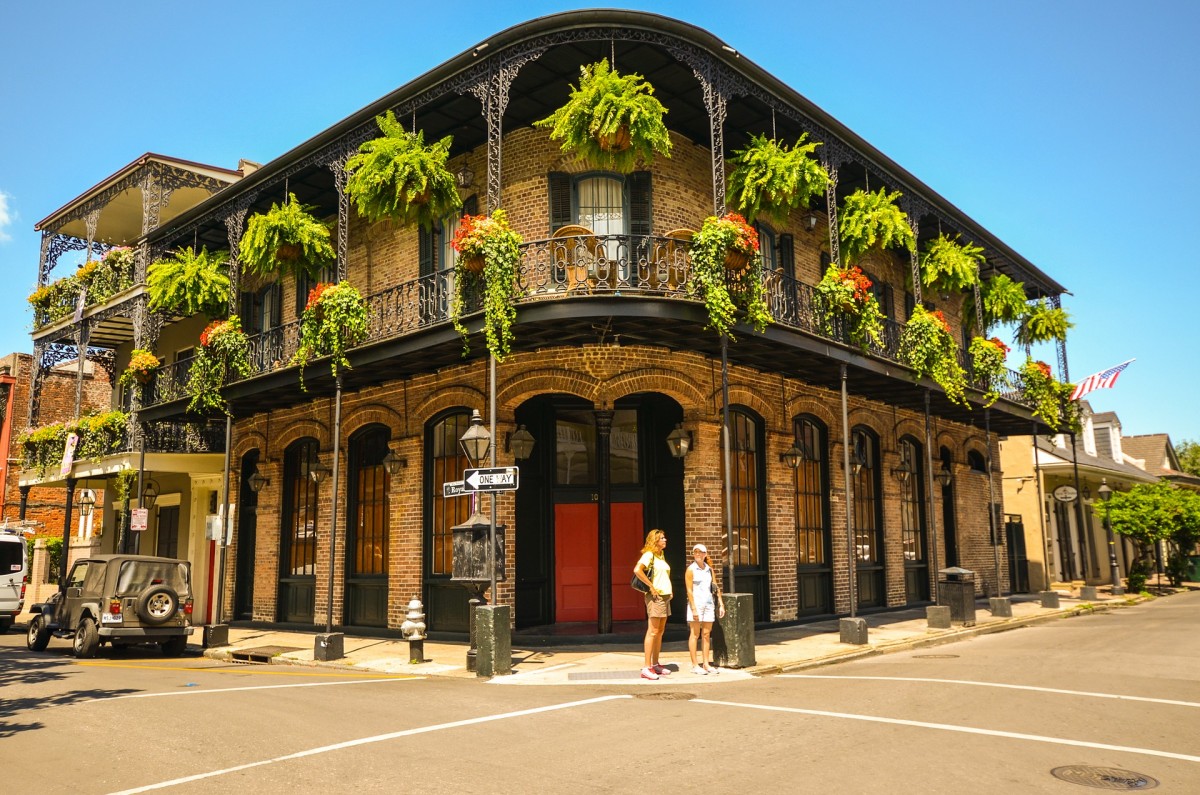
An old and close reader of the New Orleans newspapers might also recall that, back at the turn of the century, when the drink was first getting famous, it was attributed to Billy Wilkinson, one of the two head bartenders at the Sazerac, and that when New Orleans’s mercantile community sent a special train around Texas to drum up business for the city they made sure to secure his services for the journey on the basis of that invention.
Stanley Clisby Arthur had much to add to this fairly meager hoard of facts. Indeed, the story he wove around the Sazerac will be familiar to anyone with even a cursory interest in cocktail history or the culture of American tippling. The outline of his story: in 1783 a “young Creole refugee” from the revolution in Haiti arrives in New Orleans bearing “among other scanty possessions, a recipe for the compounding of a liquid tonic, called bitters, a recipe that had been a secret family formula for years.” Antoine Amedée Peychaud, our refugee, opens a pharmacy, selling these bitters either plain or mixed in with a little brandy and served in a porcelain egg-cup, “known to the French-speaking population as a coquetier (pronounced ko-k-tay´).” This he claimed was the world’s first cocktail, and the American mispronunciation of the name of the vessel Peychaud served it in supposedly gave the drink its name. In due time, the drink spread throughout the city, finding a particular home at John B. Schiller’s bar on Exchange Alley, the Sazerac Coffee-House, named after the well-known brand of Cognac for which Schiller was the exclusive agent.
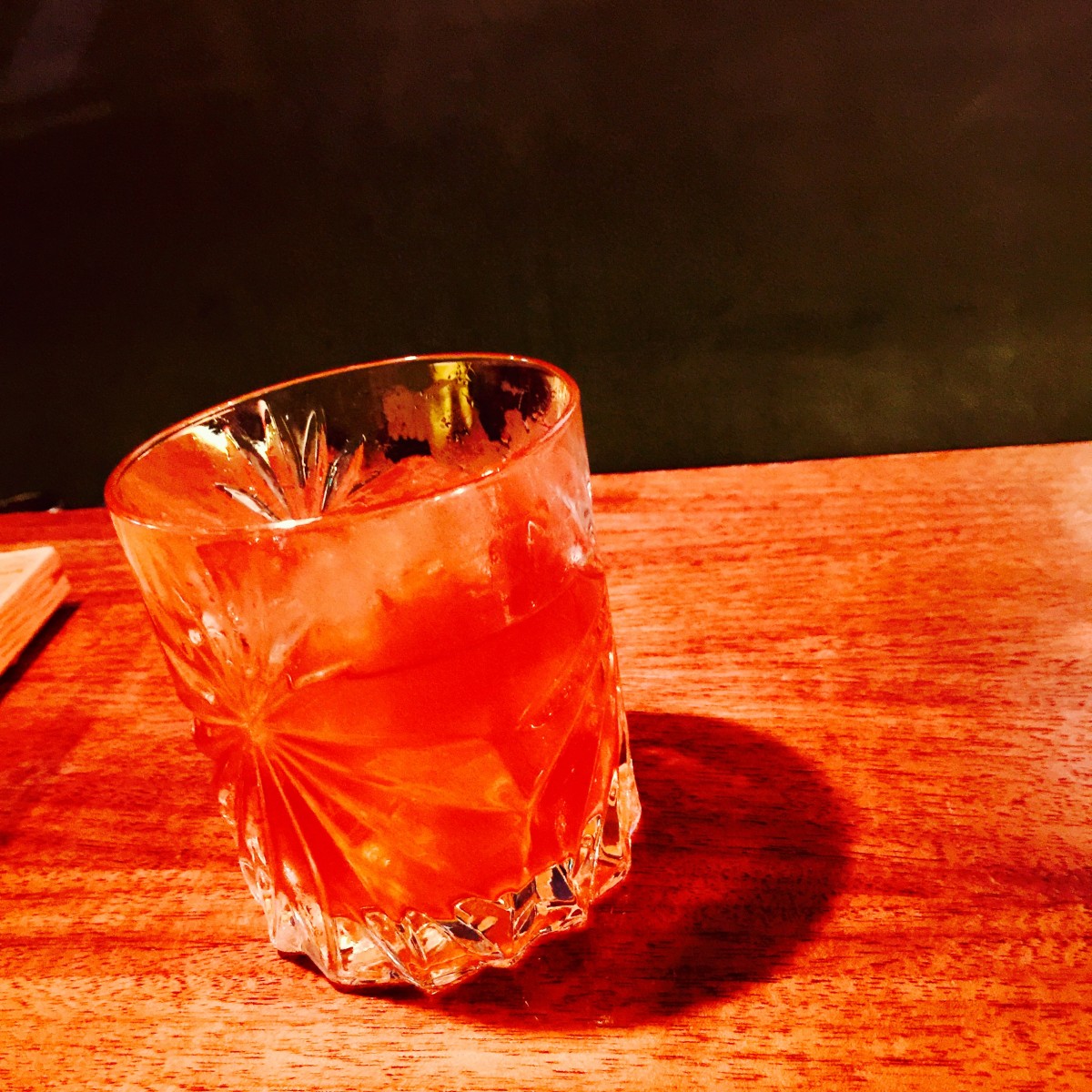
Schiller’s Sazerac Cocktail (made with Sazerac Cognac, of course) “became the drink of the day,” Arthur continues. His bookkeeper, Thomas Handy, took over the bar in 1870; around then, “an alteration in the mixture also took place. Peychaud’s bitters was still used to add the right fillip, but American rye whiskey was substituted for the cognac to please the tastes of Americans who preferred ‘red likker’ to any pale-faced brandy.” Perhaps at the same time, “the dash of absinthe was added.” This innovation, Arthur concludes, “has been credited to Leon Lamothe who in 1858 was a bartender for Emile Seignouret, Charles Cavaroc & Co., a wine importing firm located in the old Seignouret mansion still standing at 520 Royal street. More likely it was about 1870, when Lamothe was employed at Pina’s restaurant in Burgundy street that he experimented with absinthe and made the Sazerac what it is today.”
Arthur’s account is lively and anecdotal and bristles with the kind of fine detail that sells a story. Unfortunately, it’s also got more holes in it than a Hawthorne strainer. For one thing, the whole part about Peychaud bringing his bitters recipe with him from Haiti is pure, unalloyed bosh, as my colleague Philip Greene has so ably proved. That part about Peychaud’s brandy-and-bitters-in-an-egg-cup thing being the first cocktail is also impossible. Indeed, Arthur even wrote to Frank Viztelly, the leading lexicographer of his day, to see what he had to say about the origin of the drink and its name. Viztelly sent him back half a dozen quote-filled paragraphs on the topic, including a key 1806 citation from a Hudson, New York, newspaper giving a definition of the drink.

Arthur printed Viztelly’s whole answer, adding “After careful analysis of Doctor Vizetelly’s data it appears to be certain that the odd mispronunciation of coquetier in New Orleans is the oldest and most positive basis for the word ‘cocktail.’” If he performed that analysis, there’s no trace of it in his text; “nothing to see here” is the basis of his argument. In other places, his impressive level of detail becomes less impressive the more you poke at it. Take that bit about Leon Lamothe being “employed at Pina’s restaurant in Burgundy street” in 1870. If one turns to Gardner’s New Orleans Directory for 1870, one quickly finds the basis for this claim in this entry: “Lamothe Leon, cash. Pino’s Restaurant, r. 151 Burgundy.” So: a cashier, not a bartender, at Pino’s, not “Pina’s”; as for that “r.”—it stands for “residence,” as a glance at the beginning of the directory informs us. (Pino’s Café de la Bourse was in fact on Carondelet St., as Arthur could have determined by looking a few pages ahead in the directory.) You would expect an archivist to know this. And while the 1861 directory shows that Lamothe did work for Cavaroc & Co., agents for Seignouret wines, for a time, there’s no sign that the firm ever had a bar or was anything but a wholesale house. (Lamothe went on to own his own bars and restaurants and was a fixture in the city’s sporting life, which is probably how he got roped into this whole story.)
Now, I will admit that we all make mistakes and a little sloppiness isn’t the end of the world. (Hell, in the second edition of my book Imbibe! I got Frank Farrell, popularizer of the Leatherneck cocktail, confused with Frank Fogarty, creator of the of Last Word cocktail.) But there’s one more example from Arthur that goes beyond sloppiness: to bolster his theory of the New Orleans origin of the cocktail, he cites the pseudonymous “Henry Didimus,” who spent the winter of 1835-1836 in the city and later published an account of it. At one point, a local explains to our traveler the difference between a Brandy Toddy and a Brandy Cocktail: the Toddy is “a little water, a little sugar, and a great deal of brandy,” while the Cocktail is, as Arthur gives the quotation, “the same ingredients, with a shade of bitters.” Unfortunately, what Didimus actually wrote was “the same ingredients, with a shade of Stoughton’s bitters” (Stoughton’s were the original bitters, dating back to London in 1690). This is not merely sloppy: Arthur is cooking the books so that he can claim Peychaud’s as the original cocktail bitters. It is, like the rest of his account, fake news.
And yet, to this day most people approach the history of this most romantic and bewitching of cocktails through Arthur’s prism and begin with the idea that the Sazerac Coffee House had a famous Cognac-based house special spiked with Peychaud’s Bitters which they later switched to a whiskey drink and served in an absinthe-rinsed glass. What if, however, we forget about Arthur entirely and go back to the basics of historiography?
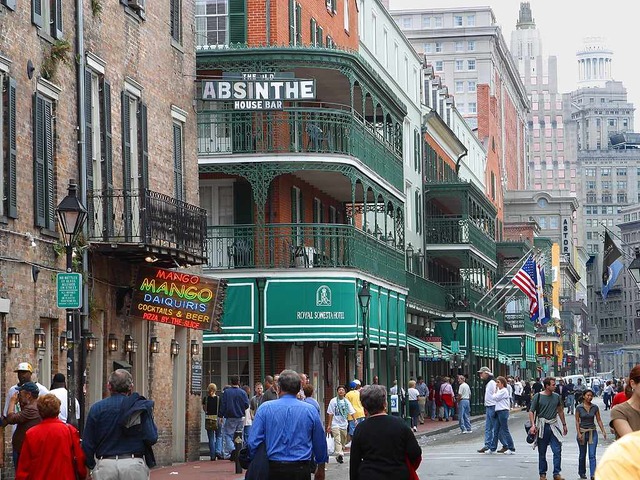
The first thing we can establish is that the Sazerac House’s cocktail was a late addition to its fame. A thorough study of New Orleans newspapers from the nineteenth century turns up many occasions where, if the bar had a famous cocktail, that fact would have been mentioned. And yet, in 1871 when Handy opened a branch of the saloon on Carondelet Street, there is no reminder that the famous Sazerac Cocktail can be had there as well. In 1873, when the Daily Picayune devoted three columns to “What We Drink” in the city, there is nary a hint of the Sazerac. Nor does one turn up in 1876, when the New Orleans Times wrote about the city’s old bars, leading with three paragraphs on the Sazerac House, “the oldest and best known” of them. In 1878, when Handy sold the bar, and in 1882, when its new owner closed it and Handy reopened it, nobody mourned the loss of their Sazerac cocktails or rejoiced in their return. When the Times-Democrat surveyed the state of the city’s drinking in 1885, pronounced “brandy drinking in New Orleans…a thing of the past” and enumerated the popular mixed drinks of the day, they included the “Rabbledegay” from Memphis (I have no earthly idea what was in that one) and the good old Manhattan from New York, but no Sazerac.
Only in 1895 do we get some points up on the board, when the Times-Democrat closes an 880-word article about the Sazerac House and its management with the line, “Vincent Miret [Billy Wilkinson’s co-head bartender and, like Wilkinson, a partner in the business] is to be congratulated upon his reputation as the best mixer of whisky cocktails in the City of New Orleans.” That same year, according to their trademark application, Miret, Wilkinson and their silent partner began bottling the bar’s cocktails. The first known mention of a “Sazerac Cocktail” would come in March of 1899, when a fraternity magazine, the Alpha Tau Omega Palm, printed a report on their annual convention, held in the Crescent City the previous November, at which “a good deal was heard” about the “mysterious article,” a Sazerac Cocktail. New Orleans was changing from a major working port into a tourist city, and its old bars were part of the attraction.
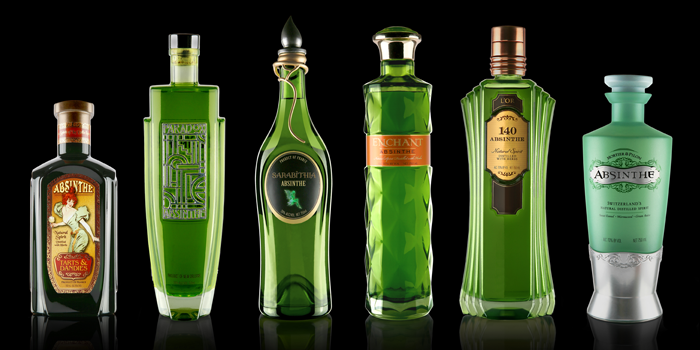
The irony is that the Sazerac’s Whiskey Cocktail, with its absinthe rinse, was barely distinguishable from the absinthe-dashed “Improved Whiskey Cocktail,” a drink known nationwide since the 1870s. Sure, the Handy’s Bitters (the firm’s knockoff of Peychaud’s Bitters) with which it was made gave it a nice rosy hue, but you could get those nationwide as well. What you couldn’t get, however, was Vincent Miret or Billy Wilkinson, big, sporty men who put on a fine show of old-time bartending. Or—more importantly—Old New Orleans. In fact, you still can’t get that unless you’re actually in New Orleans. I’ve drunk (and, I will sheepishly admit, got drunk on) Sazeracs all around the world. Made properly, they’re as good as drinks get. But none of them, no matter how famous the hand that stirred them, ever taste as good as one consumed at the bar of New Orleans’s institutions Tujague’s or the Napoleon House or Broussard’s or wherever the loquacious and encyclopedic Chris McMillian’s working. I don’t know how to explain that with chemistry or physics, but it’s nonetheless a scientific fact right up there with the First Law of Thermodynamics.
Sadly, Miret died in 1899 and Wilkinson in 1905, both of them before the drink achieved the height of its fame. Had they lived, they would have no doubt told their story enough times to protect it from the speculations of Arthur and his ilk. They did all the hard work it takes to thread the impossibly thin needle that is cocktail immortality; they just didn’t stick around to get the credit.
The Sazerac House’s Sazerac Cocktail
Ingredients:
2 oz Straight rye whiskey
1 tsp rich simple syrup (2 parts sugar to 1 part water)
scant tsp Luxardo Maraschino Liqueur (the Sazerac’s secret ingredient)
2 dashes Peychaud’s Bitters
1 dash Angostura Bitters
.25 oz Absinthe
Glass: Old-fashioned
Garnish: Lemon peel twist
Directions:
Take two 6-oz Old-Fashioned glasses. Fill one with ice and set it to chill. In the other, add all the ingredients except the absinthe. Fill with cracked ice and stir well. Dump the ice from first glass and add the absinthe. Swirl it around to cover the inside. Pour out excess. Strain the contents of the second glass into the first. Garnish with a twist a lemon peel over the top.

You might be interested in...
TRAVEL: PARK HYATT SIEM REAP
Once You Are Ensconced in The Loving Embrace of This Emblematic Hotel, You Feel Energised and Ready to Explore The City And, of course, All The Multitudes of Angkor Wat.
TRAVEL: THE AVIARY HOTEL
The Aviary Hotel is a Modern, Convenient Nest in Siem Reap For Those Looking For a Perch in the Heart of The City.
TRAVEL: BANYAN TREE KUALA LUMPUR
Kuala Lumpur Offers Many Delights, Most of Which You Can Experience From Sky High Banyan Tree.
TRAVEL: PARK HYATT SIEM REAP
TRAVEL: THE AVIARY HOTEL
TRAVEL: BANYAN TREE KUALA LUMPUR